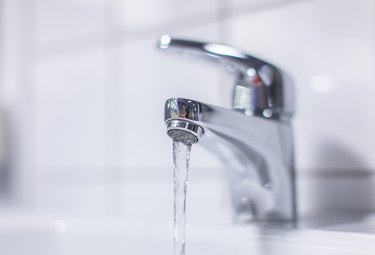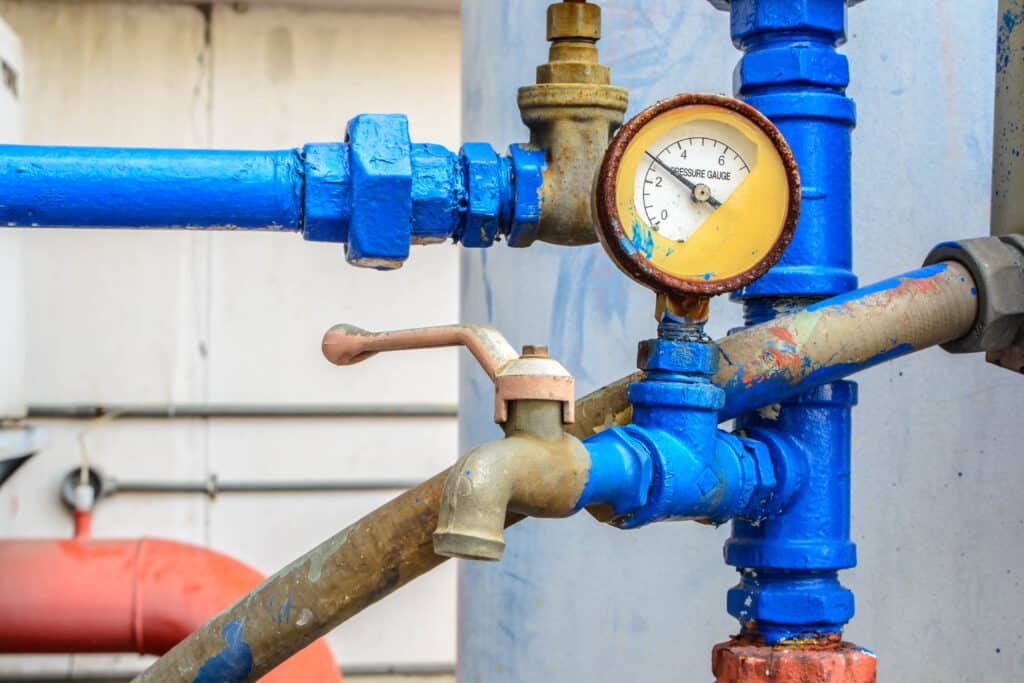The Definitive Instruction to Addressing Low Water Pressure in Your Home
The Definitive Instruction to Addressing Low Water Pressure in Your Home
Blog Article
We have stumbled on this article involving Low Water Pressure in the House? below on the internet and think it made sense to share it with you here.

Low water pressure in your house can be an irritating issue, impacting everything from bathing to cleaning dishes. If you're experiencing weak water circulation, there are a number of feasible causes and remedies to check out. In this overview, we'll review typical factors for low water stress and practical actions to address the problem properly.
Intro to Low Water Stress
Low tide stress takes place when the circulation of water from your faucets, showers, and various other components is weak than common. This can make daily jobs more difficult and much less efficient. Comprehending the reasons for low tide stress is essential to finding the best solution.
Common Reasons For Low Water Pressure
Pipeline Obstructions
Over time, pipes can come to be clogged with natural resource, sediment, or debris, limiting the flow of water. This is a common problem in older homes with galvanized steel pipes.
Rust
Corrosion within pipelines can bring about leaks and reduced water stress. Corrosion accumulation can constrict water circulation, particularly in aging plumbing systems.
Faulty Pressure Regulatory Authorities
Stress regulators are accountable for keeping regular water stress in your house. If they malfunction, it can cause low water stress or unequal circulation throughout your home.
Community Supply Of Water Issues
Occasionally, the issue exists outside your home. Metropolitan water supply concerns, such as main line leaks or upkeep work, can briefly reduce water pressure in your area.
Exactly How to Diagnose Low Water Stress
Inspecting Taps and Fixtures
Start by evaluating the water pressure at different faucets and components throughout your home. If the concern is separated to particular areas, it might suggest localized problems.
Checking Pipes
Examine visible pipes for indicators of leaks, corrosion, or clogs. Take note of any unusual sounds, such as knocking or rattling pipelines, which could show problems within the plumbing system.
Consulting with a Plumber
If you're incapable to identify the source of low water stress, consider employing an expert plumber to perform an extensive inspection. They can identify underlying concerns and recommend suitable options.
Do It Yourself Solutions to Deal With Low Tide Stress
Cleansing Aerators and Showerheads
Mineral deposits can build up in aerators and showerheads, decreasing water flow. Eliminate and clean these components consistently to enhance water stress.
Flushing Hot Water Heater
Debris accumulation in the hot water heater can restrict flow and reduce performance. Purging the storage tank regularly helps get rid of debris and preserve optimal efficiency.
Examining Pressure Regulatory Authority
Make sure that the stress regulator is working appropriately. Changing or changing the regulator can aid bring back proper water pressure throughout your home.
Clearing Up Clogs in Pipeline
For minor obstructions, try utilizing a plumbing snake or chemical drain cleaner to clear blockages in pipelines. Beware when making use of chemicals and follow security standards.
When to Call an Expert Plumber
If do it yourself initiatives fail to settle the concern or if you suspect significant plumbing issues, it's ideal to look for assistance from a certified plumber. They have the expertise and tools to deal with intricate concerns securely and properly.
Safety Nets to Preserve Water Pressure
Regular Maintenance
Set up routine upkeep for your plumbing system to avoid concerns such as rust, leaks, and blockages. Attending to minor troubles early can assist prevent more substantial fixings in the future.
Installing a Stress Booster
Take into consideration setting up a stress booster pump to improve water pressure in locations with regularly low circulation. This can be particularly beneficial for multi-story homes or residential or commercial properties with high-demand components.
Monitoring Water Usage
Bear in mind water usage routines and avoid ill-using the plumbing system. Straightforward changes, such as incredible showers and washing lots, can help preserve appropriate water stress.
Final thought
Managing low tide stress can be frustrating, but identifying the underlying causes and executing suitable remedies can recover optimum circulation throughout your home. Whether it's cleaning up aerators, checking pipes, or talking to a plumber, taking positive actions can make certain a steady supply of water for your daily needs.
FOUR WAYS TO FIX LOW WATER PRESSURE NOW
Turning on a shower or faucet only to find the water comes out in a sad, slow drizzle is never a good feeling. How exactly are you supposed to wash a pan or take a quick shower when it takes 10 minutes just to rinse off a little soap? The good news is that when your water pressure is bad, there's always a cause: typically one that can be easily fixed. Here are some of the most common causes of low pressure and what you can do to fix the issue:
DEBRIS AND MINERAL DEPOSIT BUILDUPS
If you notice low water pressure from just one or two of the fixtures in your house, the problem likely has to do with debris buildup. Water is full of minerals and other debris, all of which can accumulate in your pipes and on your fixtures. This can cause a blockage that affects how much water flows through. To fix this, try filling a small plastic bag with white vinegar, and use a rubber band to hang it around your showerhead or faucet. Let the head of the fixture soak for a few hours, and the vinegar should loosen the deposits.
WATER LEAKS
Leaks are another common cause of low water pressure. If water is flowing out of your plumbing through a hole or crack before it can reach your fixture, the pressure coming out of the faucet or showerhead will be lower. A plumbing professional is your best bet for finding and repairing a leak in your water supply pipes.
Leaks are another common cause of low water pressure. If water is flowing out of your plumbing through a hole or crack before it can reach your fixture, the pressure coming out of the faucet or showerhead will be lower. A plumbing professional is your best bet for finding and repairing a leak in your water supply pipes.
A VALVE ISSUE
If you have low water pressure throughout your home, check your main shut-off valve to make sure it's completely open. You may also want to see if there's a pressure-reducing valve installed. If there is, have a plumber help you adjust the settings to get the pressure you're looking for.
OTHERS USING WATER
Believe it or not, your low water pressure could be caused by your neighbors. If you notice low pressure at certain times of day, it may be because you and the people living next to you have similar schedules - when everyone is showering at the same time, the pressure will be lower in every home. Low pressure throughout the neighborhood may also be caused by an issue with your municipal water supply. If that's the case, call the supplier to see if they're working on the issue.
https://www.rotorooter.com/blog/water-leaking/low-water-pressure-fixes/

We were guided to that editorial about through a pal on another website. In case you enjoyed reading our blog post please consider to pass it around. Thank you for your time. Kindly pay a visit to our blog back soon.
Check Us Out Report this page